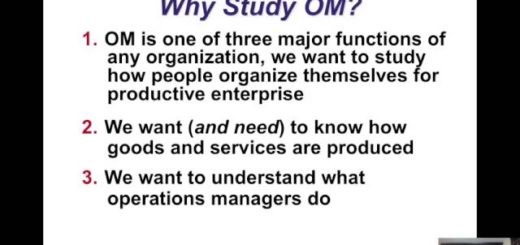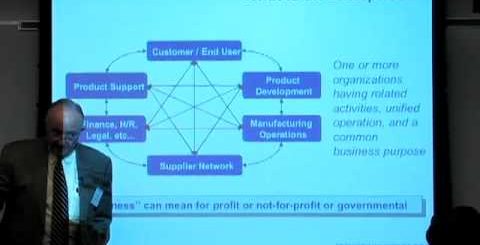Guide to the Automotive Supply Chain
Unlock the Secrets of the Automotive Supply Chain.
The automotive supply chain is a complex and ever-evolving system that is essential to the success of the automotive industry. This guide provides an overview of the automotive supply chain, from the raw materials used to manufacture vehicles to the distribution of finished products to dealerships and customers. It covers the different stages of the supply chain, the roles of the various players involved, and the challenges and opportunities that exist in the industry. It also provides an overview of the latest trends and technologies that are transforming the automotive supply chain. With this guide, you will gain a better understanding of the automotive supply chain and be better equipped to make informed decisions about your own supply chain operations.
How Automotive Supply Chain Management Can Help Improve Efficiency and Reduce Costs
Automotive supply chain management is a critical component of the automotive industry, as it helps to ensure that the right parts and components are delivered to the right place at the right time. By optimizing the supply chain, automotive companies can improve efficiency and reduce costs.
One way to improve efficiency and reduce costs is to streamline the supply chain. This can be done by reducing the number of suppliers, consolidating orders, and using technology to automate processes. By reducing the number of suppliers, automotive companies can reduce the amount of time and money spent on managing the supply chain. Consolidating orders can also help to reduce costs, as it reduces the number of shipments and the amount of paperwork associated with each order. Automating processes can also help to reduce costs, as it eliminates the need for manual labor and reduces the amount of time spent on administrative tasks.
Another way to improve efficiency and reduce costs is to use predictive analytics. Predictive analytics can help automotive companies to anticipate customer demand and plan for future orders. This can help to reduce the amount of inventory that needs to be held, as well as the amount of time spent on managing the supply chain.
Finally, automotive companies can also reduce costs by using third-party logistics providers. Third-party logistics providers can help to reduce the amount of time and money spent on managing the supply chain, as they can handle the transportation, warehousing, and distribution of parts and components. This can help to reduce the amount of time and money spent on managing the supply chain, as well as the amount of time spent on administrative tasks.
By optimizing the supply chain, automotive companies can improve efficiency and reduce costs. Streamlining the supply chain, using predictive analytics, and using third-party logistics providers can all help to reduce the amount of time and money spent on managing the supply chain. This can help automotive companies to remain competitive in the market and ensure that they are able to deliver the right parts and components to their customers on time and at the right price.
The Benefits of Automating Your Automotive Supply Chain
Automating the automotive supply chain can provide a number of benefits to businesses in the automotive industry. Automation can help to reduce costs, improve efficiency, and increase customer satisfaction.
Cost Reduction: Automation can help to reduce costs associated with the automotive supply chain. Automation can help to reduce labor costs by eliminating the need for manual labor. Automation can also help to reduce costs associated with inventory management, as automated systems can help to ensure that the right parts are in the right place at the right time. Automation can also help to reduce costs associated with transportation, as automated systems can help to optimize routes and reduce fuel costs.
Improved Efficiency: Automation can help to improve the efficiency of the automotive supply chain. Automated systems can help to streamline processes, such as order fulfillment and inventory management. Automation can also help to reduce the time it takes to complete tasks, as automated systems can help to eliminate manual processes. Automation can also help to reduce errors, as automated systems can help to ensure accuracy and consistency.
Increased Customer Satisfaction: Automation can help to increase customer satisfaction by providing customers with faster and more accurate service. Automated systems can help to reduce wait times, as orders can be fulfilled quickly and accurately. Automation can also help to reduce errors, as automated systems can help to ensure accuracy and consistency. Automation can also help to provide customers with real-time updates on their orders, as automated systems can help to provide customers with up-to-date information.
In conclusion, automating the automotive supply chain can provide a number of benefits to businesses in the automotive industry. Automation can help to reduce costs, improve efficiency, and increase customer satisfaction. Automation can help businesses in the automotive industry to remain competitive and successful in today’s market.
Understanding the Different Types of Automotive Supply Chain Partners
The automotive supply chain is a complex network of partners that work together to ensure the production and delivery of vehicles and parts. These partners include suppliers, manufacturers, distributors, retailers, and other service providers. Understanding the different types of partners and their roles in the automotive supply chain is essential for successful operations.
Suppliers are the first link in the automotive supply chain. They provide the raw materials and components that are used to manufacture vehicles and parts. Suppliers must be reliable and have the capacity to meet the demands of the automotive industry. They must also be able to provide quality materials and components at competitive prices.
Manufacturers are the second link in the automotive supply chain. They are responsible for producing vehicles and parts from the raw materials and components provided by suppliers. Manufacturers must have the capacity to produce high-quality products in a timely manner. They must also be able to meet the demands of the automotive industry.
Distributors are the third link in the automotive supply chain. They are responsible for transporting vehicles and parts from manufacturers to retailers. Distributors must have the capacity to deliver products in a timely manner and must be able to meet the demands of the automotive industry.
Retailers are the fourth link in the automotive supply chain. They are responsible for selling vehicles and parts to consumers. Retailers must have the capacity to provide quality products at competitive prices. They must also be able to meet the demands of the automotive industry.
Other service providers are the fifth link in the automotive supply chain. They provide services such as financing, insurance, and maintenance. Service providers must be reliable and have the capacity to meet the demands of the automotive industry.
Understanding the different types of partners and their roles in the automotive supply chain is essential for successful operations. By working together, these partners can ensure the production and delivery of vehicles and parts in a timely and cost-effective manner.
How to Develop an Effective Automotive Supply Chain Strategy
An effective automotive supply chain strategy is essential for any automotive business to remain competitive in the industry. A well-developed strategy can help to reduce costs, improve customer service, and increase efficiency. Here are some tips for developing an effective automotive supply chain strategy.
1. Analyze Your Current Supply Chain: The first step in developing an effective automotive supply chain strategy is to analyze your current supply chain. This includes understanding the current processes, identifying any inefficiencies, and assessing the strengths and weaknesses of your current system.
2. Identify Your Goals: Once you have a clear understanding of your current supply chain, you can begin to identify your goals. These goals should be specific and measurable, and should include objectives such as reducing costs, improving customer service, and increasing efficiency.
3. Develop a Plan: Once you have identified your goals, you can begin to develop a plan to achieve them. This plan should include a timeline, budget, and resources needed to implement the strategy.
4. Implement the Strategy: Once you have developed a plan, it is time to implement the strategy. This includes training staff, implementing new processes, and monitoring the progress of the strategy.
5. Monitor and Adjust: Finally, it is important to monitor the progress of the strategy and make adjustments as needed. This includes evaluating the effectiveness of the strategy and making changes to ensure that it is meeting your goals.
By following these steps, you can develop an effective automotive supply chain strategy that will help your business remain competitive in the industry.
The Role of Technology in Automotive Supply Chain Management
The automotive industry is one of the most complex and dynamic industries in the world. It is a highly competitive market, and the success of any automotive company depends on its ability to effectively manage its supply chain. Technology has become an integral part of automotive supply chain management, and it is playing an increasingly important role in helping companies to optimize their operations and remain competitive.
Technology has enabled automotive companies to streamline their supply chain processes and reduce costs. Automotive companies are now able to track and monitor their supply chain in real-time, allowing them to quickly identify and address any issues that may arise. Automotive companies are also able to use technology to automate certain processes, such as order processing and inventory management. This helps to reduce the amount of time and resources required to manage the supply chain, resulting in cost savings.
Technology has also enabled automotive companies to improve their customer service. Automotive companies are now able to provide customers with more accurate and timely information about their orders and deliveries. This helps to ensure that customers receive their orders on time and in the condition they expect. Additionally, technology has enabled automotive companies to better manage their relationships with suppliers. Automotive companies are now able to track and monitor their suppliers’ performance, allowing them to quickly identify and address any issues that may arise.
Finally, technology has enabled automotive companies to better manage their supply chain risks. Automotive companies are now able to use predictive analytics to identify potential risks and take proactive steps to mitigate them. This helps to ensure that the supply chain remains stable and reliable, and that any disruptions are minimized.
In conclusion, technology has become an integral part of automotive supply chain management, and it is playing an increasingly important role in helping companies to optimize their operations and remain competitive. Automotive companies are now able to streamline their processes, reduce costs, improve customer service, and better manage their supply chain risks. As technology continues to evolve, it is likely that its role in automotive supply chain management will become even more important.
The Impact of Globalization on Automotive Supply Chains
Globalization has had a profound impact on automotive supply chains. The automotive industry is one of the most globalized industries in the world, with supply chains spanning multiple countries and continents. Globalization has enabled automotive companies to access new markets, reduce costs, and increase efficiency.
Globalization has enabled automotive companies to access new markets. Automotive companies can now source parts and components from around the world, allowing them to access new markets and customers. This has enabled automotive companies to expand their reach and increase their sales. Additionally, globalization has enabled automotive companies to access new technologies and innovations, allowing them to stay ahead of the competition.
Globalization has also enabled automotive companies to reduce costs. Automotive companies can now source parts and components from countries with lower labor costs, allowing them to reduce their production costs. Additionally, globalization has enabled automotive companies to access new technologies and innovations, allowing them to reduce their production costs even further.
Finally, globalization has enabled automotive companies to increase efficiency. Automotive companies can now source parts and components from around the world, allowing them to reduce lead times and increase production speed. Additionally, globalization has enabled automotive companies to access new technologies and innovations, allowing them to streamline their production processes and increase efficiency.
In conclusion, globalization has had a profound impact on automotive supply chains. Globalization has enabled automotive companies to access new markets, reduce costs, and increase efficiency. As a result, automotive companies have been able to remain competitive in an increasingly globalized world.
Best Practices for Managing Automotive Supply Chain Risk
The automotive industry is highly complex and dynamic, and managing supply chain risk is a critical component of success. To ensure the smooth operation of the supply chain, it is important to have a comprehensive risk management strategy in place. Here are some best practices for managing automotive supply chain risk:
1. Establish a Risk Management Plan: Develop a comprehensive risk management plan that outlines the processes and procedures for identifying, assessing, and mitigating supply chain risks. This plan should include a risk assessment process, risk mitigation strategies, and a monitoring system.
2. Monitor Suppliers: Monitor suppliers closely to ensure they are meeting quality standards and delivering on time. Establish a system for tracking supplier performance and take corrective action when necessary.
3. Develop Contingency Plans: Develop contingency plans to address potential supply chain disruptions. These plans should include strategies for dealing with unexpected delays, supply shortages, and other potential risks.
4. Utilize Technology: Utilize technology to improve visibility and control over the supply chain. Automated systems can help to identify potential risks and provide real-time data on supplier performance.
5. Establish Partnerships: Establish partnerships with reliable suppliers and build strong relationships with them. This will help to ensure that the supply chain is secure and that suppliers are meeting quality standards.
By following these best practices, automotive companies can reduce the risk of supply chain disruptions and ensure the smooth operation of their supply chain.
The Future of Automotive Supply Chain Management: What to Expect in the Coming Years
The automotive industry is one of the most complex and dynamic industries in the world. As such, the supply chain management of the automotive industry is constantly evolving to meet the changing needs of the industry. In the coming years, the automotive supply chain management will continue to evolve and become more efficient and effective.
One of the most significant changes that can be expected in the automotive supply chain management in the coming years is the increased use of technology. Automotive companies are increasingly turning to technology to streamline their supply chain processes. This includes the use of artificial intelligence (AI) and machine learning (ML) to automate processes, as well as the use of blockchain technology to improve transparency and traceability. Additionally, the use of predictive analytics and big data will help automotive companies to better anticipate customer needs and optimize their supply chain processes.
Another major trend that can be expected in the automotive supply chain management in the coming years is the increased focus on sustainability. Automotive companies are increasingly looking for ways to reduce their environmental impact and improve their sustainability practices. This includes the use of renewable energy sources, the adoption of green manufacturing processes, and the implementation of sustainable supply chain management practices.
Finally, the automotive supply chain management will continue to become more globalized in the coming years. Automotive companies are increasingly looking to global markets for their supply chain needs. This includes sourcing components from different countries, as well as expanding their production and distribution networks to different parts of the world. Additionally, the use of digital technologies such as the Internet of Things (IoT) will enable automotive companies to better manage their global supply chains.
In conclusion, the automotive supply chain management is constantly evolving to meet the changing needs of the industry. In the coming years, automotive companies can expect to see increased use of technology, a focus on sustainability, and a more globalized supply chain. By taking advantage of these trends, automotive companies can ensure that their supply chain management is efficient and effective.
Conclusion
The automotive supply chain is a complex and ever-evolving system that is essential to the success of the automotive industry. By understanding the different components of the automotive supply chain, companies can better manage their supply chain operations and ensure that their products are delivered on time and at the right cost. With the right strategies and tools, companies can optimize their supply chain operations and maximize their profits. With the right knowledge and understanding of the automotive supply chain, companies can ensure that their products are delivered on time and at the right cost.
Automotive Supply Chain Resources
- Automated Car Manufacturing Factory: Mercedes Benz
- Gigafactory vs Microfactory: Arrival Rethinks How an EV is Built
- How Toyota Changed Manufacturing – Lean Thinking.
- How Toyota used its Supply Chain Model to beat FORD & GM.
- Just in Time by Toyota: The Smartest Production System in The World.
- Nissan Intelligent Factory
- PORSCHE 911 | How It’s Made: Dream Cars
- Supply Chain Today.
- Tesla: Artificial Intelligence Manufacturing Revolution.
- Tesla Global Supply Chain!
- Toyota Way–‘The 14 Principles of the Toyota Way’.







































